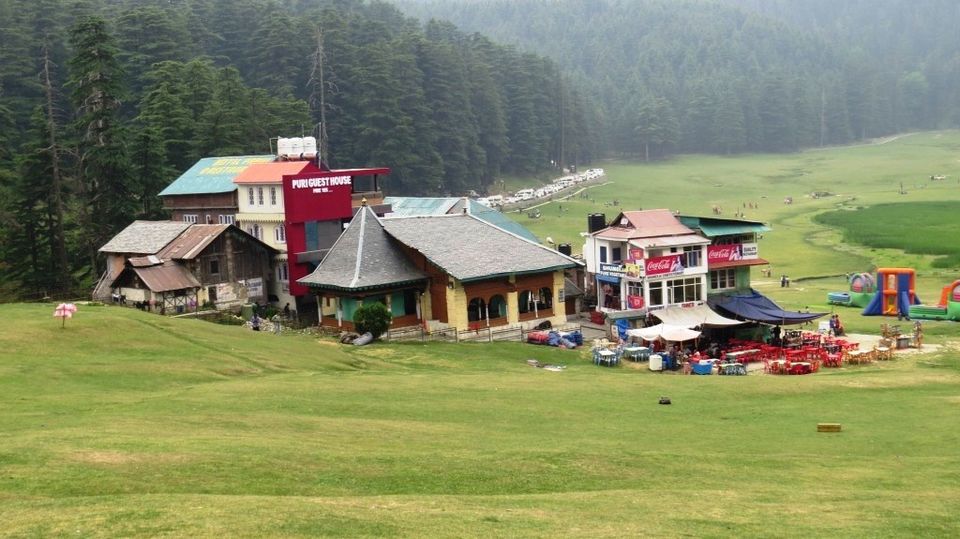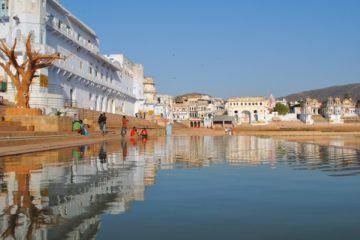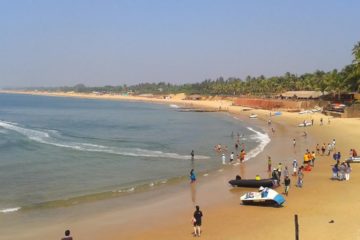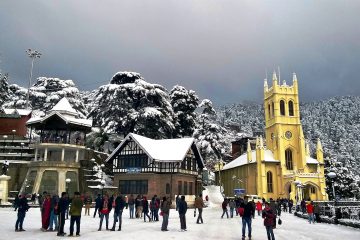Himachal Pradesh is a northern Indian state in the Himalayas. It’s home to scenic mountain towns and resorts such as Dalhousie. Host to the Dalai Lama, Himachal Pradesh has a strong Tibetan presence. This is reflected in its Buddhist temples and monasteries, as well as its vibrant Tibetan New Year celebrations.
| PLACES COVERED | Delhi-Chandigarh-Dalhousie-Dharamshala-Manali-Shimla-Delhi | ||||||
| DURATION OF TRIP | 11 NIGHTS/12 DAYS | ||||||
| MINIMUM REQUIRED | 2 PAX | ||||||
| ACCOMMODATION | BUDGET ACCOMMODATION | ||||||
| DEPARTURE/RETURN LOCATION | PICKUP DELHI /DROP DELHI | ||||||
| RETURN TIME | Approximately 6:30 PM/Depends on onward Journey | ||||||
| WEAR | Comfortable athletic clothing, sunscreen. | ||||||
| BASIC INCLUSION |
|
||||||
| BASIC EXCLUSION |
|
Day 01: Arrive in Delhi
On arrival at Delhi airport or railway station, our representative will meet you to pick you up and transfer to your hotel. Stay overnight at Hotel.
Day 02: Delhi Sightseeing
After breakfast Explore Delhi visit:
India Gate:-The towering archway of India Gate at the center of New Delhi is a war memorial, built in memory of the Indian soldiers who lost their lives fighting for the British Army in World War I. At night it glows warmly under floodlights, and the gardens that line its boulevard are a popular place to enjoy a warm summer’s evening.
Humayun’s Tomb:-If you think Humayun’s Tomb looks a bit like the TajMahal in Agra, that’s because it was the inspiration for the TajMahal’s creation. The tomb was built in 1570, and houses the body of the second Mughal emperor, Humayun. It was the first of this type of Mughal architecture to be built in India, and the Mughal rulers followed it up with an extensive period of construction all over the country.
Lotus Temple:-The Bahai Temple is commonly referred to as the Lotus Temple, as it’s shaped like a lotus flower. It’s particularly pretty at night, when it’s attractively lit up. Made out of white marble, the temple belongs to the Bahai Faith, which proclaims the unity of all people and religions. Everybody is welcome to worship there.
QutubMinar:-QutabMinar, the tallest brick minaret in the world, is an incredible example of early Indo–Islamic architecture. It was built in 1206, but the reason remains a mystery. Some believe that it was made to signify victory and the beginning of Muslim rule in India, while others say it was used to call the faithful to prayer.
Red Fort:-Delhi’s most famous monument, the Red Fort, stands as a powerful reminder of the Mughal emperors who ruled India. Its walls, which stretch for over two kilometers (1.2 miles), were built in 1638 to keep out invaders. However, they failed to stop the fort being captured by the Sikhs and the British. To take your imagination back to the ancient era, a one hour sound and light show of the fort’s history is held each evening.
Jamia Masjid:-Jama Masjid is another marvelous treasure of the Old City, and is the largest mosque in India. Its courtyard can hold an incredible 25,000 devotees. The mosque took 13 years to build, and was completed in 1650. A strenuous climb to the top of its southern tower will reward you with a stunning view across the rooftops of Delhi.
Chandni Chowk Market:- is the main street of the old city of Delhi (Shahjahanabad). Chandni Chowk, literally means moonlight square and derives its name from the fact that originally, a canal ran down the centre of the street with pools at major intersections which would reflect moonlight. Today, the stream is gone and Chandni Chowk is an extremely busy road. There are shops, schools, residences, places of worship, old and new along the road.
Stay overnight at Hotel.
Day 03: Delhi - Chandigarh
Early in the morning after the breakfast and tea we will drive to Chandigarh, On arrival at Chandigarh, transfer to your hotel for Check-in. Relax for some time. Later we will proceed for the half day city tour of Chandigarh. We will visit here Rock Garden, Rose Garden and Sukhana Lake along with International Doll Museum.
Later drive back to your hotel , Overnight stay at Hotel.
Day 04: Chandigarh - Dalhousie
After Breakfast in the morning, we will drive to Dalhousie. En route to Dalhousie, W’ll take short break at dhabas will give some relaxation from the exertion of long drive. We will continue our journey and on arrival at Dalhousie, transfer to your hotel for check-in.
Dalhousie:- was established in 1854 by the British Governor General Lord Dalhousie. Built around five hills Dalhousie is clothed in stately groves of deodar and oak. Its marvelous forests trails overlook vistas of wooded hills, waterfalls, spring and rivulets. Dalhousie still has a touch of the “Raj” and its colonial style building and houses bring back the flavors of an earlier era. We will visit Panchpula, Kalatop and Khajjiar Lake. Later we will also visit Terah (MotiTibba) Potreyn hills from the central part of the town Of the five stately churches.
Stay Overnight stay at Hotel.
Day 05: Dalhousie - Chamba - Khajjiar - Dalhousie
Morning after breakfast, proceed for full day excursion to Chamba with an en-route visit:
Khajjair:-Located at the center of the sloping meadows is a small bog like pond into which water from the surrounding meadows and forests drains. Khajjiar was probably a glacial bowl formed during the last Himalayan ice age and left with a lake that gradually withered away. Khajjiar is part of the notified Kalatop – Khajjiar sanctuary. The Monal Pheasant, a bird which was fairly common till recent times has become relatively difficult to spot nowadays. Chamba famous for its magnificent views of Snow clad Himalayan ranges. Enjoy nature walks in Gharwal villages. You may also proceed for the excursion to Tehiri Dam for breathtaking Views.
Day 06: Dalhousie - Dharamshala
This morning post breakfast, we will drive to our next destination Dharamshala.
Dharamshala:-Mcleodganj is a famous little town of Dharamshala also known as “Little Tibet”. The Dalai Lama resides here. At the start of Mcleodganj is a small bazaar filled with variety of Tibetan handicrafts and artifacts. At the end of the spur lies the Namgyal Monastery. The external wall is surrounded by rows of prayer wheels. Within the monastery are large idols of Buddha. Excitement to visit the most beautiful hill station and formerly the Summer Headquarter of Govt. during British Rule – will compel you to wake-up early in the morning. Enjoy your breakfast and then proceed for the full day sightseeing of Dharamshala.
Visit KunalPathri, War Memorial, Dal Lake, Bhagsung falls, Overnight stay at the hotel.
Day 07: Dharamshala - Manali (6-7 hrs drive)
Today morning after breakfast, we will drive to Manali – A Dazzling Beauty of Hills and also called The Switzerland of India. Manali- the sheer raw beauty of perennial snow covered peaks for a backdrop, a wooded land full of majestic deodars and scented pines, a newly born mighty Himalyan river flowing by and a panoramic valley stretching out gives the place a surrealistic setting. A favourite shooting place for Bollywood filmmakers, Manali also has many avenues for summer activities full of adventure like trekking, mountaineering, river rafting , ballooning, parasailing and winter activities of skiing and heli-skiing.
Stay Overnight at the hotel.
Day 08: Manali (Half day local sightseeing)
The exciting day will begin with delicious and leisurely breakfast. Get refresh and energize yourself for the exploration of the hill town. We will visit some of the most interesting tourist places like Hadimbadevi Temple, Manu Temple, Club House, Tibetan Monasteries, Mountaineering Institute, Vasisht Hot Water Spring and Temple, Nehru Kund – on the road to Keylong is the Nehru kund (6 km) which is a clear water spring end scenic spot named after the late Pt. JawaharLal Nehru. Kothi (12 km) is a picturesque village and has a thrilling view of the deep gorge through which the Beas swiftly races. The beautiful Rahalla falls (16 km) are at an altitude of 2500 m. A crucial link on the old trade route and still the gateway to Trans Himalayan Lahaul, the Rohtang Pass is at the height of 3980m.
Day 09: Manali - Shimla
Morning after breakfast drive to Shimla. On arrival, check-in at the Hotel.
Day 10: Shimla (Full day sightseeing)
Today morning after breakfast, we will proceed to explore the city by visiting the most interesting places of Shimla.
which attracts the tourists throughout the year. We will visit here The State Museum, ViceRegal Lodge, The Prospect Hill, The Jakhu temple, and Summer Hill. There are many local markets decorated with small as well as congested stalls. Shimla is perfect place in winters for Honeymooners and Lovebirds. Walking on the Ridge is the most deliberate experience for any visitor. Visitors with strong bargaining skills may also visit Lakad Bazaar of Shimla near Ridge, established on the steep hill path side market.
Day 11: Shimla - Delhi
Today morning post early breakfast, after drive to Delhion arrival Checked in at Hotel stay overnight at Hotel.
Day 12: Delhi Airport Drop
Transfer you Airport for onwards Destinations Tours.
PRICES BASED ON BUDGET ACCOMMODATION FOR UPGRADE PLEASE EMAIL.
General Inclusion:
For India:-
- Arrival Departure Transfers
- Transportation By Aircon Car and English Speaking Driver
- Accommodation on Double Sharing rooms with Bed and breakfast
- Sightseeing Tours in Delhi Manali Shimla Dallousia
- Car and Driver in Delhi to explore Different Markets for One Day
- All Applicable taxes
- Drivers Boarding and Lodging
PRICES BASED ON BUDGET ACCOMMODATION FOR UPGRADE PLEASE EMAIL
- General Exclusion:
- Entrance Tickets
- Lunch and Dinner
- Tipps
- Personal Expenses
VISA INFORMATION
OVERVIEW
All foreign nationals entering India are required to possess a valid international travel document in the form of a national passport with a valid visa obtained from an Indian Mission or Post abroad.
All Individual visa seekers are requested to apply for the Indian Visa through Online application link , in order to make an application for getting the Indian visa.
The duly signed physical copy of the application form completed in all respect and submitted successfully, is to be submitted at the concerned Indian Visa Application Center (IVAC) or directly to Indian Mission/ Post, on the scheduled date of interview along with the requisite supporting documents. The instructions for filling the form and scheduling the appointment can be seen at Instructions for Online Visa Application. Important technical information for filling online Indian visa application can be referred at Technical Instructions.
The applicants are also requested to visit website of the Indian Mission concerned for detailed information about Indian visa.
ONLINE VISA APPLICATION
All Individual visa seekers are requested to apply for the Indian Visa through online application link. Or can apply by typing the URL: http://indianvisaonline.gov.in/visa/ in the address bar of web browser, in order to make an application for getting the Indian visa. In either case, no hand written application form will be accepted by any of the Indian Mission/ Post, where-ever online Visa facility has been implemented. The application form completed in all respect and submitted succesfully, is to be submitted at the concerned Indian Visa Application Center (IVAC) or directly to Indian Mission/ Post in absence of IVAC, on the scheduled date of interview along with the requisite supporting documents. The instructions for filling the form and scheduling the appointment can be refered at Instructions for Online Visa Application. Important technical information for filling online Indian visa application can be referred at Technical Instructions. If you have already applied online for Indian Visa online and want to know the status of your application,
VISA CATEGORIES
Government of India issues the following visas: Business Visa, Conference Visa, Diplomatic Visa, Employment Visa, Emergency Visa, Entry Visa, Journalist Visa, Medical Visa, Missionaries Visa, Permit to re-enter within 2 months, Research Visa, Student Visa, Tourist Visa, Transit Visa. Please follow the link for details on Visa Provision and supporting documents
VISA PROCESSING TIME
Upon receipt of the Visa Application through Indian Visa Application Center or directly, the Indian Mission/ Post requires a minimum of three working days to process the case and issue a visa depending upon the nationality and excluding special cases.
PHOTO REQUIREMENTS
Online India Visa Application allows the Applicant to upload a digital photograph of self to complete the online visa application.
Guidelines/procedure to upload a digital photograph
The digital photograph to be uploaded along with the Visa application should meet the following requirements:
Format – JPEG
Size
Minimum 10 KB
Maximum 300 KB
The height and width of the Photo must be equal.
Photo should present Full face, front view, eyes open.
Center head within frame and present full head from top of hair to bottom of chin.
Background should be plain light colored or white background.
No shadows on the face or on the background.
Without borders.
Make sure that photo presents full head from top of hair to bottom of chin. Head should measure 1 inch to 1-3/8 inches (25mm to 35mm). Make sure eye height is between 1-1/8 inches to 1-3.
FEE FOR INDIAN VISA
The visa fee depends upon the type of applied for and duration of visa. Visa fee is divided into various types depending upon the case viz; Basic fee, special fee, processing fee by out-sourcing agency. During the online registration process, at the end of the process the basic fee shall be displayed. However, this fee shall be indicative only and final fee shall be charged while submitting the application at the respective counters Fee once received are non-refundable even if the visa application is withdrawn, the visa is not granted, or if visa issued is of shorter duration of period than applied for or otherwise issued or returned at a time or on terms and conditions that may vary from those sought by the applicant. For further information on this, please check with local embassy office or Indian Visa Application center office or websites for information on applicable fee and payment methods.
VISA PROVISION
| Sl. No. | Type of Visa | Period for which granted | Entry – Single (S), Multiple (M), Double | Documents required with application | Extendable in India |
| 1 | Tourist | 180 days | M | – | No |
| 2 | Transit | 15 days | S/ Double | Return/ onward journey ticket | No |
| 3 | Business | 5 years | M | Documents to prove bonafide purpose (Company’s letter etc.) | Yes |
| 4 | Employment | 1 year/ period of contract | M | Proof of employment (appointment document), terms and conditions | Yes |
| 5 | Student | Period of course/ 5 years | M | Proof of admission in Indian Institution | Yes |
| 6 | Foreigners of Indian Origin | 5 years | M | Proof of being of Indian Origin | Yes |
INSTRUCTIONS
- Online application form:
This application form is meant for those foreigners who are applying for visa from outside India.
Each online application form is meant for one person only. Separate application has to be filed for each applicant.
Furnish information exactly in the manner asked for in the forms, especially the names, address and date of birth.
Applicants are required to verify the application details before submitting the online application. They have an option to save the online application form, in case it is not to be submitted.
Once the online application form is submitted by the applicant, then further modifications are not allowed. Hence applicants are requested to check and validate the details before submitting the online application form.
Applicants are requested to keep the Application Id (generated automatically after the submission of online form) for further communications.
- Appointment Scheduling:
Applicant can schedule the appointment as per his/ her convenience with the concerned Indian Mission.
Each applicant to schedule a separate appointment with the Indian Mission
- Process for filling up online application form:
Applicant shall access the Visa Application system online through the following link: http://indianvisaonline.gov.in/visa/.
Applicant visits the above mentioned web link and selects the Indian Mission from where he intends to apply for the Visa from the tab “Select Mission”.
Applicant fills the application on-line as per the forms standardized by the Ministry.
After filling the form and submitting it, the system shall automatically generate a Application Id. Applicants are requested to keep this Application Id for further communications with the concerned Indian Mission.
System will automatically ask the Applicant for the following confirmation: “Select ‘Yes’ if the applicant want to seek appointment and make payment online or ‘No’ if the applicant just want to print the submitted application form.”
If the applicant response is “No”, then it is requested by the applicant to take the print out of the submitted online application form and approach the concerned Indian Mission for submission of the online form along with supporting documents.
If the response from applicant is “yes” then the system automatically takes the link to perform the following:
Selection of Date and Time of appointment at the concerned Indian Mission
Calculation of Visa fee, service charge, VAT etc. as applicable according to the Visa type
E Payment using service provider’s payment system
In case the facility of Appointment Scheduling and e-Payment is not available for the concerned Indian mission, then applicant has to take the printout of the online application form and visit the concerned Indian Mission to submit the same along with supporting documents and make the payment.
Indian Culture: Traditions and Customs of India
India’s culture is among the world,s oldest; civilization in India began about 4,500 years ago. Many sources describe it as “Sa Prathama Sanskrati Vishvavara” — the first and the supreme culture in the world, according to the All World Gayatri Pariwar (AWGP) organization.
Western societies did not always see the culture of India very favorably, according to Christina De Rossi, an anthropologist at Barnet and Southgate College in London. Early anthropologists once considered culture as an evolutionary process, and ”every aspect of human development was seen as driven by evolution,” she told Live Science. “In this view, societies outside of Europe or North America, or societies that did not follow the European or Western way of life, were considered primitive and culturally inferior. Essentially this included all the colonized countries and people, such as African countries, India, and the Far East.”.
However, Indians made significant advances in architecture (Taj Mahal), mathematics (the invention of zero) and medicine (Ayurveda). Today, India is a very diverse country, with more than 1.2 billion people, according to the CIA World Factbook, making it the second most populous nation after China. Different regions have their own distinct cultures. Language, religion, food and the arts are just some of the various aspects of Indian culture. Here is a brief overview of the culture of India.
Language
India has 28 states and seven territories, according to the World Health Organization. There is no official language in India, according to a Gujarat High Court ruling in 2010. Many people living in India also write in Devanagari script. In fact, it is a misconception that the majority of people in India speak Hindi. Though many people speak Hindi in India, 59 percent of India residents speak something other than Hindi, according to The Times of India. Bengali, Telugu, Marathi, Tamil and Urdu are some other languages spoken in the country.
Religion
India is identified as the birthplace of Hinduism and Buddhism, the third and fourth largest religions. About 84 percent of the population identifies as Hindu, according to the “Handbook of Research on Development and Religion” Edited by Matthew Clarke (Edward Elgar Publishing, 2013). There are many variations of Hinduism, and four predominant sects — Shaiva, Vaishnava, Shakteya and Smarta.
About 13 percent of Indians are Muslim, making it one of the largest Islamic nations in the world. Christians and Sikhs make up a small percentage of the population, and there are even fewer Buddhists and Jains, according to the “Handbook.”
Food
When the Moghul Empire invaded during the sixteenth century, they left a significant mark on the Indian cuisine, according to Texas A&M University. Indian cuisine is also influenced by many other countries. It is known for its large assortment of dishes and its liberal use of herbs and spices. Cooking styles vary from region to region.
Wheat, Basmati rice and pulses with chana (Bengal gram) are important staples of the Indian diet. The food is rich with curries and spices, including ginger, coriander, cardamom, turmeric, dried hot peppers, and cinnamon, among others. Chutneys — thick condiments and spreads made from assorted fruits and vegetables such as tamarind and tomatoes and mint, cilantro and other herbs — are used generously in Indian cooking.
Many Hindus are vegetarians, but lamb and chicken are common in main dishes for non-vegetarians. The Guardian reports that between 20 percent and 40 percent of India’s population is vegetarian.
Much of Indian food is eaten with fingers or bread used as utensils. There is a wide array of breads served with meals, including naan, a leavened, oven-baked flatbread, and bhatoora, a fried, fluffy flatbread common in North India and eaten with chickpea curry.
Architecture and art
The most well-known example of Indian architecture is the Taj Mahal, built by Mughal emperor Shah Jahan to honor his third wife, Mumtaz Mahal. It combines elements from Islamic, Persian, Ottoman Turkish and Indian architectural styles. India also has many ancient temples.
India is well known for its film industry, which is often referred to as Bollywood. The country’s movie history began in 1896 when the Lumière brothers demonstrated the art of cinema in Mumbai, according to the Golden Globes. Today, the films are known for their elaborate singing and dancing.
Indian dance, music and theater traditions span back more than 2,000 years, according to Nilima Bhadbhade, author of “Contract Law in India” (Kluwer Law International, 2010). The major classical dance traditions — Bharata Natyam, Kathak, Odissi, Manipuri, Kuchipudi, Mohiniattam and Kathakali — draw on themes from mythology and literature and have rigid presentation rules.
Clothing
Indian clothing is closely identified with the colorful silk saris worn by many of the country’s women. The traditional clothing for men is the dhoti, an unstitched piece of cloth that is tied around the waist and legs. Men also wear a kurta, a loose shirt that is worn about knee-length. For special occasions, men wear a sherwani, which is a long coat that is buttoned up to the collar and down to the knees. The Nehru jacket is a shorter version of a sherwani.
Customs and celebrations
The country celebrates Republic Day (Jan. 26), Independence Day (Aug. 15) and Mahatma Gandhi’s Birthday (Oct. 2). Diwali is the largest and most important holiday to India, according to National Geographic. It is a five-day festival known as the festival of lights because of the lights lit during the celebration to symbolize the inner light that protects them from spiritual darkness. Holi, the festival of colors, also called the festival of love, is popular in the spring.
Weather
India is situated in Southern Asia, bordering the Arabian Sea and the Bay of Bengal, between Burma and Pakistan.
The climate in India varies from a tropical monsoon climate in the south to a temperate climate in the north. If you are thinking of Visiting Delhi (the capital of India) then best to visit it in October, November, February and March. That’s when the nights are cool and the days are filled with a little sunshine. May, June and July are very hot with temperatures over 45 degrees (113 Fahrenheit). It is a dry heat and is sometimes accompanied by dusty desert winds. Most of the rain falls between July and September but they are not the tropical rains you’ll experience in India’s coastal cities.





